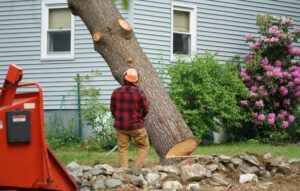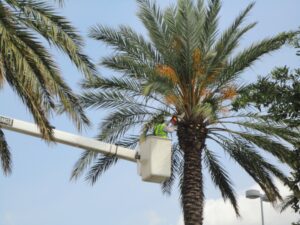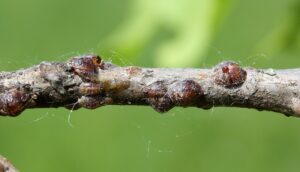The idea that a copper nail can kill a tree has been a topic of debate and folklore for years. Some believe that driving a copper nail into the trunk of a tree will slowly poison it, while others dismiss it as an old wives’ tale with no real effect. But how much truth is there to this claim?
In this article, we will explore the science behind copper’s interaction with trees, whether a copper nail can actually kill a tree, and other factors to consider when it comes to tree health and management.
The Origins of the Myth
The notion that a single copper nail can kill a tree likely stems from copper’s known toxic effects on plant life in certain forms. Historically, copper has been used in agricultural applications as a fungicide and pesticide. Copper compounds can disrupt enzymes in plants, leading to stunted growth or death when used in large amounts. Given this information, it’s easy to see how people might assume that hammering a copper nail into a tree trunk would result in the tree’s eventual demise.
However, the reality is more complicated. The question remains: does this widely held belief hold any scientific weight, or is it simply a myth?
Can a Copper Nail Really Kill a Tree?
Copper Toxicity and Trees
Copper is indeed toxic to plants in high concentrations. When absorbed by plants, copper interferes with photosynthesis and other metabolic processes, which can ultimately lead to the plant’s death. This is why copper-based fungicides are effective at controlling certain plant diseases.
However, when it comes to trees, the amount of copper delivered through a single nail is minimal and is unlikely to cause significant damage, let alone kill the tree. Trees have natural defense mechanisms that allow them to compartmentalize damage and protect themselves from foreign objects, such as nails, insects, and even fungi.
How Trees Defend Against Foreign Objects
When you drive a nail into a tree, the tree reacts by creating a barrier around the wounded area through a process known as compartmentalization of decay in trees (CODIT). This process helps the tree limit the spread of infection, disease, or any harmful substances introduced by the foreign object.
In the case of a copper nail, the tree is likely to isolate the copper and prevent it from spreading to other parts of the tree. The small amount of copper that may leach from the nail would be absorbed into a limited area of the tree’s tissue, reducing its impact.
In summary, the copper in the nail doesn’t spread far enough or in high enough concentrations to kill the tree. Even though copper can be toxic to plants in large quantities, the amount in a single nail is too small to be effective in this way.
Testing the Theory: Scientific Research
Although there is little direct scientific research specifically on copper nails killing trees, many arborists and plant scientists agree that driving a single copper nail into a tree is unlikely to kill it. Anecdotal evidence and experiments carried out by various gardening enthusiasts have shown that trees often survive the presence of a copper nail with little or no noticeable harm.
In one example, an experiment involved driving several copper nails into a variety of trees over a period of months. In almost all cases, the trees showed no signs of decline or distress, suggesting that the nails had little impact. In contrast, tree-killing techniques that involve injecting copper sulfate or other chemicals directly into the tree’s vascular system are far more effective, as they disrupt the tree’s ability to transport water and nutrients.
Factors That Actually Affect Tree Health
While a single copper nail won’t kill a tree, there are several factors that can significantly impact a tree’s health. If you’re concerned about the vitality of your trees, consider the following common causes of tree decline:
1. Pests and Diseases
Pests such as borers, beetles, and aphids, as well as diseases like root rot and powdery mildew, can wreak havoc on a tree’s health. Keeping an eye out for signs of pest damage and fungal infections can help prevent serious issues.
2. Watering and Soil Conditions
Too much or too little water can cause a tree to become stressed, leading to weak roots and poor growth. Additionally, soil compaction, nutrient deficiencies, or poor drainage can have long-term negative effects on a tree’s health.
3. Physical Damage
Repeated or extensive physical damage, such as improper pruning or damage from construction equipment, can seriously harm a tree. While trees can recover from small wounds, large or multiple injuries make it difficult for the tree to compartmentalize the damage.
4. Invasive Species
Invasive plants or animals can outcompete or damage local trees, weakening them over time. Removing invasive species and fostering a healthy environment for trees to thrive is crucial for long-term tree care.
What Does Kill a Tree?
If a copper nail won’t kill a tree, what will? Here are a few methods that are more likely to lead to the death of a tree, whether intentional or not:
1. Girdling
Girdling a tree involves removing a strip of bark around the entire circumference of the trunk. This interrupts the tree’s ability to transport nutrients and water, eventually leading to death. Girdling is one of the most effective ways to kill a tree.
2. Chemical Injections
Using specific tree-killing chemicals, such as glyphosate or copper sulfate, is a more reliable way to kill a tree. These chemicals are typically injected into the tree’s vascular system, where they interfere with critical biological processes.
3. Over-Pruning or Improper Pruning
Excessive pruning or improper cutting can weaken a tree by removing too much of its leaf area, disrupting photosynthesis, and making it more susceptible to disease and pests.
4. Root Damage
Damaging or cutting a tree’s roots can have a significant impact on its health. Tree roots are responsible for absorbing water and nutrients, so any damage to them can limit the tree’s ability to survive.
Alternatives to Killing a Tree
If you’re dealing with a problematic tree, such as one that is too large or is causing structural damage to property, there are more effective and responsible alternatives to driving in copper nails:
1. Tree Removal
Hiring a professional arborist to remove a tree is the most effective way to deal with trees that are causing issues. This ensures that the tree is removed safely and responsibly.
2. Pruning or Trimming
If the tree is simply overgrown, consider having it professionally pruned. Trimming back large branches can reduce the tree’s footprint and eliminate potential hazards without killing the tree.
3. Transplanting
In some cases, trees can be transplanted to another location where they won’t cause issues. This is especially true for younger, smaller trees that have not yet developed large root systems.
Conclusion: Does a Copper Nail Kill a Tree?
The idea that a single copper nail can kill a tree is largely a myth. While copper can be toxic to plants in high concentrations, the amount delivered through a nail is typically too small to have any significant effect on a mature tree. Trees have natural defense mechanisms that allow them to compartmentalize damage, making them resilient to small intrusions like nails.
If you’re dealing with a problematic tree, it’s best to consult a professional arborist who can recommend the most effective and safe methods for managing or removing the tree. For those looking to remove a tree, using more effective methods like chemical treatments or professional removal services is the best approach.
In short, while copper nails may not harm a tree, there are far better and more reliable ways to manage or remove trees as needed.





